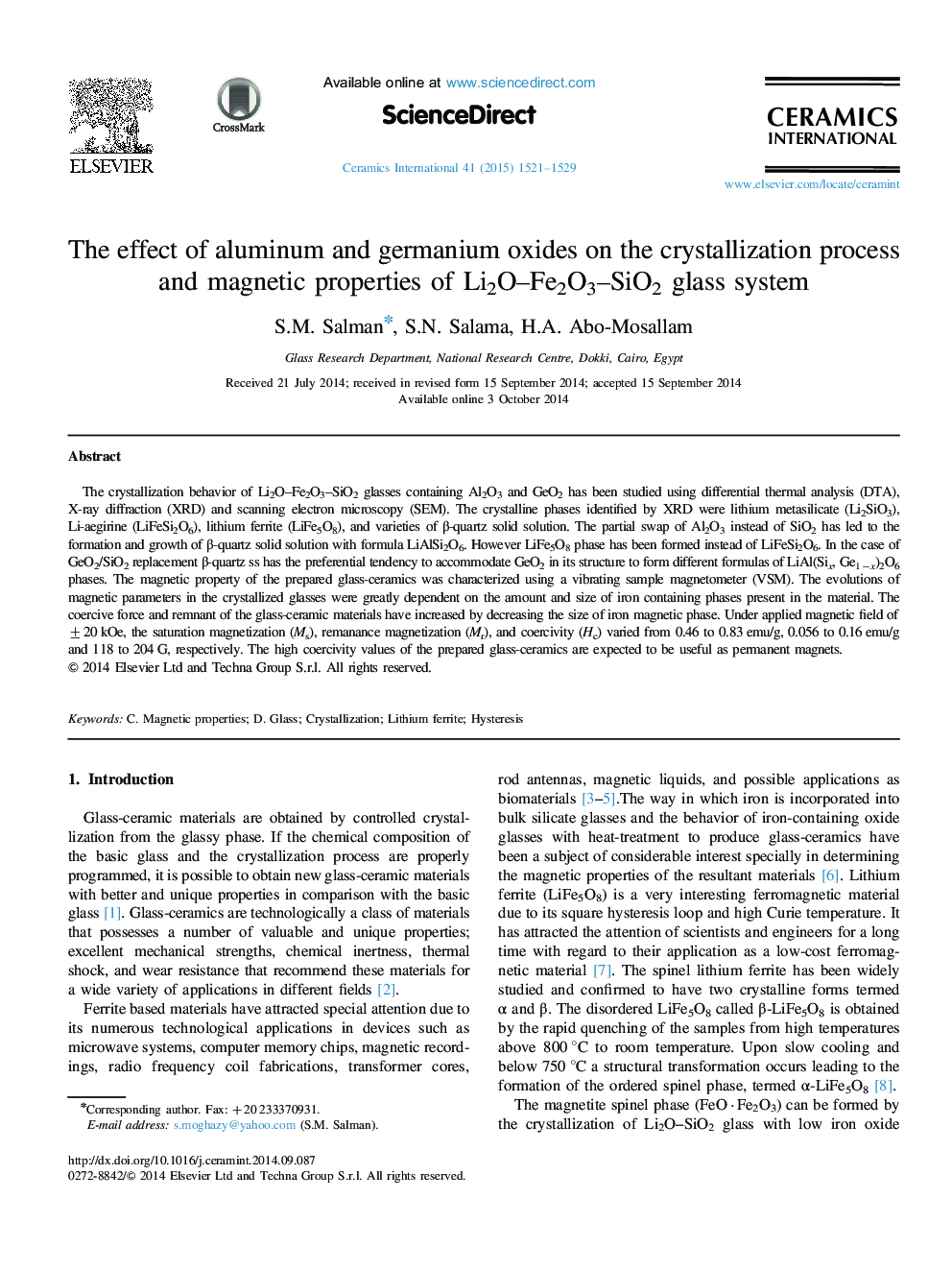| Article ID | Journal | Published Year | Pages | File Type |
|---|---|---|---|---|
| 1460854 | Ceramics International | 2015 | 9 Pages |
The crystallization behavior of Li2O–Fe2O3–SiO2 glasses containing Al2O3 and GeO2 has been studied using differential thermal analysis (DTA), X-ray diffraction (XRD) and scanning electron microscopy (SEM). The crystalline phases identified by XRD were lithium metasilicate (Li2SiO3), Li-aegirine (LiFeSi2O6), lithium ferrite (LiFe5O8), and varieties of β-quartz solid solution. The partial swap of Al2O3 instead of SiO2 has led to the formation and growth of β-quartz solid solution with formula LiAlSi2O6. However LiFe5O8 phase has been formed instead of LiFeSi2O6. In the case of GeO2/SiO2 replacement β-quartz ss has the preferential tendency to accommodate GeO2 in its structure to form different formulas of LiAl(Six, Ge1−x)2O6 phases. The magnetic property of the prepared glass-ceramics was characterized using a vibrating sample magnetometer (VSM). The evolutions of magnetic parameters in the crystallized glasses were greatly dependent on the amount and size of iron containing phases present in the material. The coercive force and remnant of the glass-ceramic materials have increased by decreasing the size of iron magnetic phase. Under applied magnetic field of ±20 kOe, the saturation magnetization (Ms), remanance magnetization (Mr), and coercivity (Hc) varied from 0.46 to 0.83 emu/g, 0.056 to 0.16 emu/g and 118 to 204 G, respectively. The high coercivity values of the prepared glass-ceramics are expected to be useful as permanent magnets.
